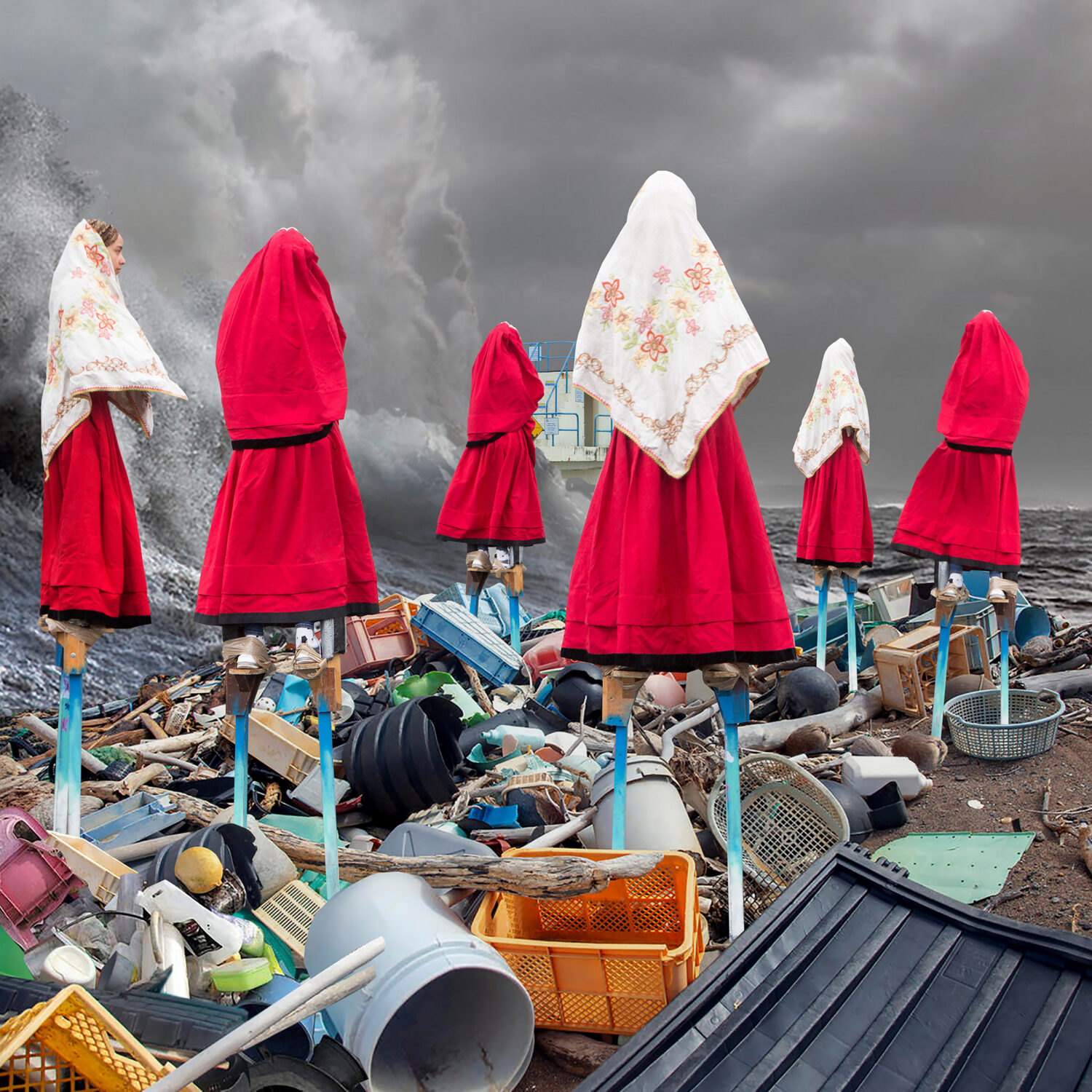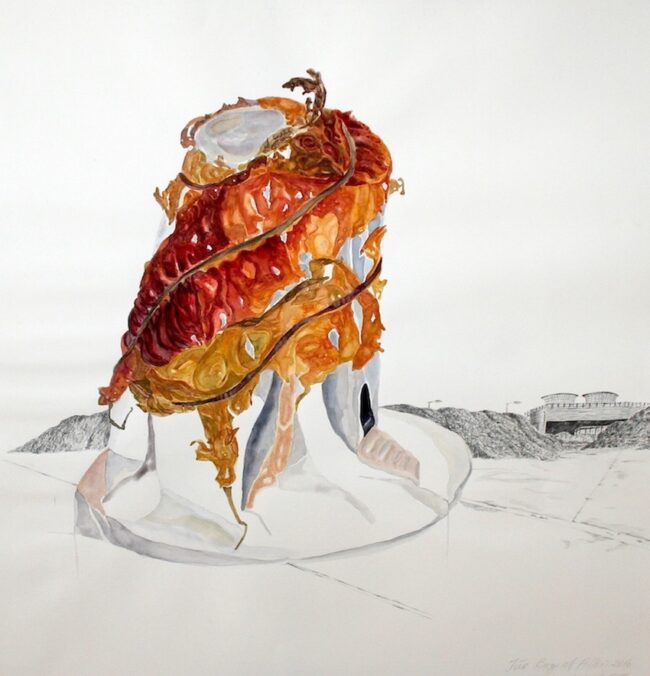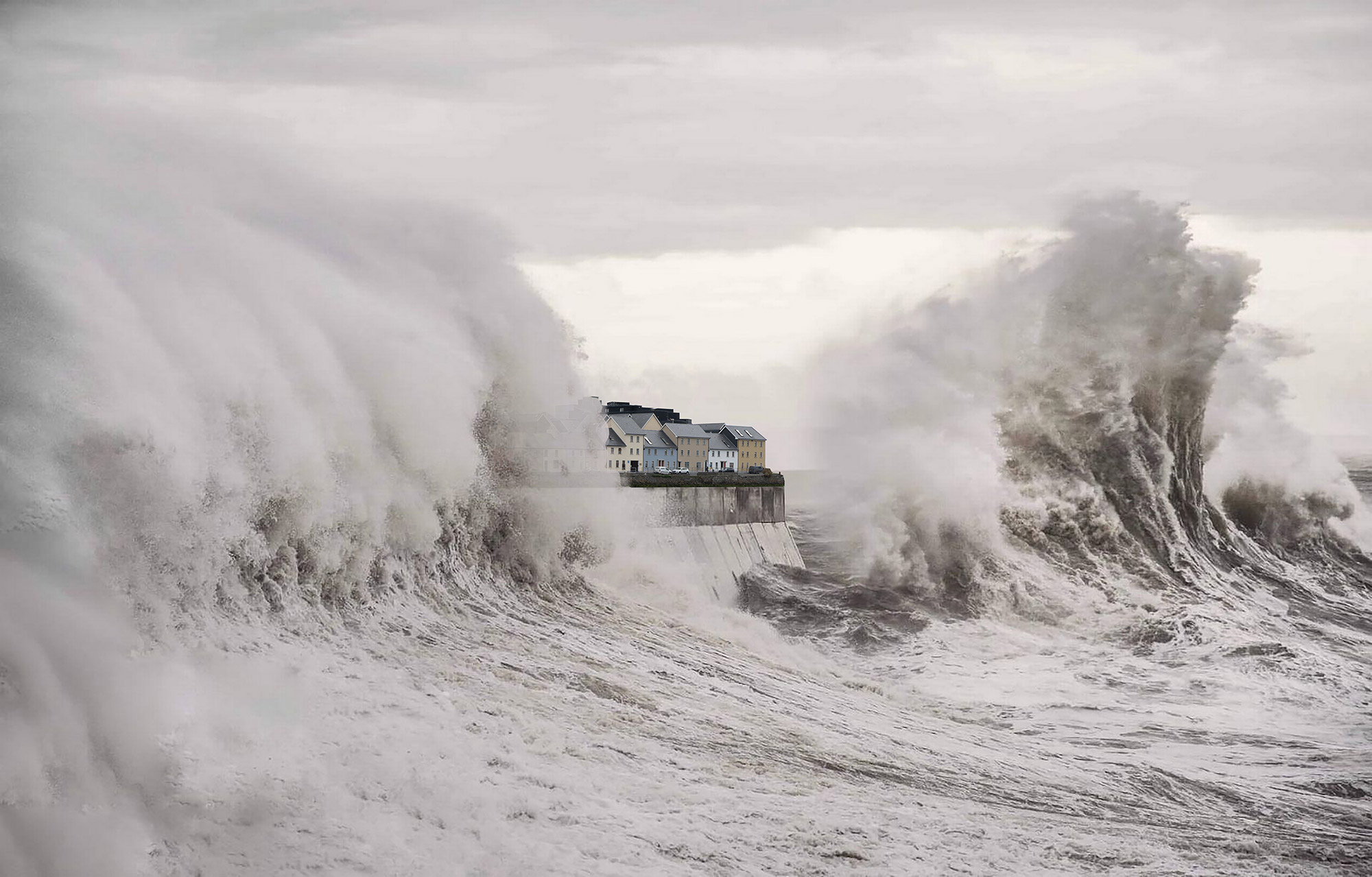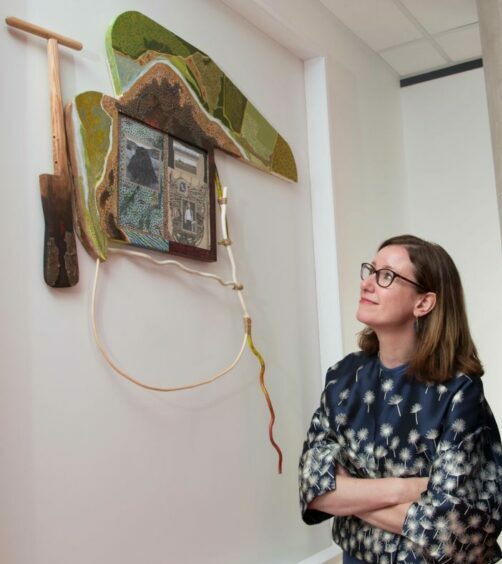
In May 2019, Ireland became the second country in the world to declare a Climate and Biodiversity Emergency. The all-of-society problems of the climate and biodiversity crises will not be adequately addressed unless more joined up thinking, funding supports and multilateral action takes place across all disciplinary areas of expertise.
Culture and language have played key roles in how environmental knowledge systems have been passed down across societies for generations. In his digital-born artwork, Sea Tamagotchi: Fóclóir Farraige, Manchán Magan writes about the different ways in which words can capture place-based knowledges. He reminds us that caileantóireacht denotes “forecasting the weather by noticing natural phenomena,” that buailteog is a “shaft, or ray of light, on the wrong side of the sun”—a sign of bad weather approaching—and that gaoithe iascaireachta stores knowledge about winds “which are good and bad for fishing.” He focuses on gathering a fóclóir, a linguistic toolkit that aids fishing communities in navigating seas and changing coastlines, while also helping to decode weather patterns and interpret phenomena in the natural world.
Such knowledge systems form part of what UNESCO terms Traditional Ecological Knowledge and are valuable tools for the future sustainability of our planet. As extreme weather events become more frequent, there is a need to expand knowledge systems to allow for a mapping of the vast repercussions of the climate crisis. The climate and biodiversity emergency is after all, a ‘hyperobject’, in the words of Timothy Morton, something which is “massively distributed in time and space relative to humans.” (1) Solutions to an existential challenge of this kind must be scaffolded with fortitude, precision and creativity—along with an openness to envisage new ways of thinking and building towards more eco-socially just futures for all. With this in mind,Earth Writings was created, an international project in which a transdisciplinary conversation convenes on the causes, consequences and responsibilities relevant to climate and biodiversity crises.
Origins
Earth Writings builds on a decade of international exchange between academics, activists and artists from across Ireland, the UK, Europe, North and South America, Africa and New Zealand. Investigating ways of working collectively, participants have brought together expertise from the Arts, Technology and Sciences, to address the Earth emergency and build a more eco-socially just world. Through my involvement in co-leading this project, I have learned that culture can help us see things differently and can allow us to emotionally connect, intellectually process and cognitively understand the magnitude of the ‘hyperobjects’ that are climate change and mass biodiversity loss. Works like the Galway 2020 European Capital of Culture Drowned Galway project by Ríonach Ní Néill and Joe Lee capture the ability of artworks to help people imagine possible futures, for better or for worse.

Earth Writings evolved from a transdisciplinary research project that had been devised in recent years between myself—an Irish Studies’ scholar interested in the intersections between culture and the environment—and colleagues Professor Gerry Kearns and Professor Karen E. Till (Department of Geography, Maynooth University). Our ‘proof of concept’ came to fruition with a symposium and art exhibition exploring the role of the Arts in the climate crisis in 2019, culminating in the publication of an interdisciplinary art book of essays and interviews between artists, scientists and community activists in 2020.
In November 2021, I chaired an international webinar,Art and Climate Change: A Post-Cop26 Roundtable Discussion, organised by Future Earth Ireland and co-hosted by the Royal Irish Academy and the Moore Institute, University of Galway. Culture had been notably absent from discussions around climate policy in Glasgow at the time, and the webinar sought to address this gap with 12 panellists and 220+ attendees from across Ireland and 14 other countries, discussing the role of creativity in addressing climate change. I discussed such concerns further in an EU ENLIGHT webinar in January 2022. (2)
From these initial conversations emerged a collaborative art book, titled Earth Writings: Bogs, Fields, Forests, Gardens, edited by Karen E. Till, which received the Geographical Society of Ireland Book of the Year Award in May 2022, and was supported by Kildare County Council, Maynooth University, the Irish Research Council and Creative Ireland. (3) The next phase of the project, a short book series, accompanied by a website and public event series, is now currently underway.

‘The Upside’ – Classroom Conversations
Earth Writings casts a critical and inquisitive eye on ecological and climate emergencies in Ireland, inviting our students and the wider public to debate the key existential question of our time. As a discursive project, exploring contemporary environmental narratives through a wide-range of practices (literature, visual arts, media, music, film and socially-engaged community practice), it naturally lends itself to the opening up of questions in the 21st century classroom.
Over the last two years, I have been teaching project themes to my Irish and international students, in the lecture halls and during lockdown in the zoom-room. When giving lectures overseas as a visiting scholar, I also have students in my classroom taking degrees in Business, Science, Law, and Medicine. I have recognised a shared concern among various students about their environment, as well as a desire to learn more from an interdisciplinary perspective. The new transdisciplinary modules to which I contribute at University of Galway, “Sustainability” and “Global Engagement”, offer our own and visiting students from a wide range of degree programmes the opportunity to carefully study the pressing questions of our times, while benefitting from cross-cutting expertise from different disciplines along the way.
Common to all of these students is a passion for engagement through the lens of culture, and they in turn are encouraged by the interconnections between artists and scientists working together to address these global challenges. What I in turn have found inspiring is that (counter-intuitively perhaps, given the ease to which we can all sometimes fall prey to doomster scenarios of dystopian futures), my students are in fact becoming more hopeful about the role they can actively play as global citizens now and in the future when learning from such arts-based projects.
And so, I make it a point at the end of all such lectures to have a final slide that gives ‘The Upside’, some good news stories about the environment. My most recent lecture with a first-year English group ended with a student reminding 300 of us in the Kirwan Lecture Theatre of how the global community came together to solve the COVID pandemic. “So why then,” he argued, “can we not do the same for the environment?” I’m going to open my first lecture of 2023 with that hopeful proposition.

Earth Writings highlights the work of artists Monica de Bath, Cathy Fitzgerald, Pauline O’Connell and Seoidín O’Sullivan. Find out more about Earth Writings here.
(1) “A Quake in Being: An Introduction to Hyperobjects” from Horton, Timothy (2013). Hyperobjects: Philosophy and Ecology after the End of the World. University Of Minnesota Press.
(2) The EU ENLIGHT webinar in January 2022 focused on the theme of “Tackling Climate Change: The Humanities Perspective”.
(3) Previous work in this area has also been supported by the Irish Research Council New Foundations STEAM award, and the College of Arts Research Fund at the University of Galway
Profiles

Nessa Cronin is Assistant Professor in Irish Studies and Associate Director of the Moore Institute for the Humanities and Social Studies at the University of Galway. As an interdisciplinary scholar with a background in Philosophy and Literature, she has published widely on various aspects of Irish Literature, Cultural Geography, Climate Change and Socially-Engaged Arts Practices investigating issues concerning place, language, translation and identity in contemporary Irish and European cultures.
She has been the recipient of awards from the Irish Research Council, Culture Ireland and the European Science Foundation, and is a member of the Irish National Committee of Future Earth Global.